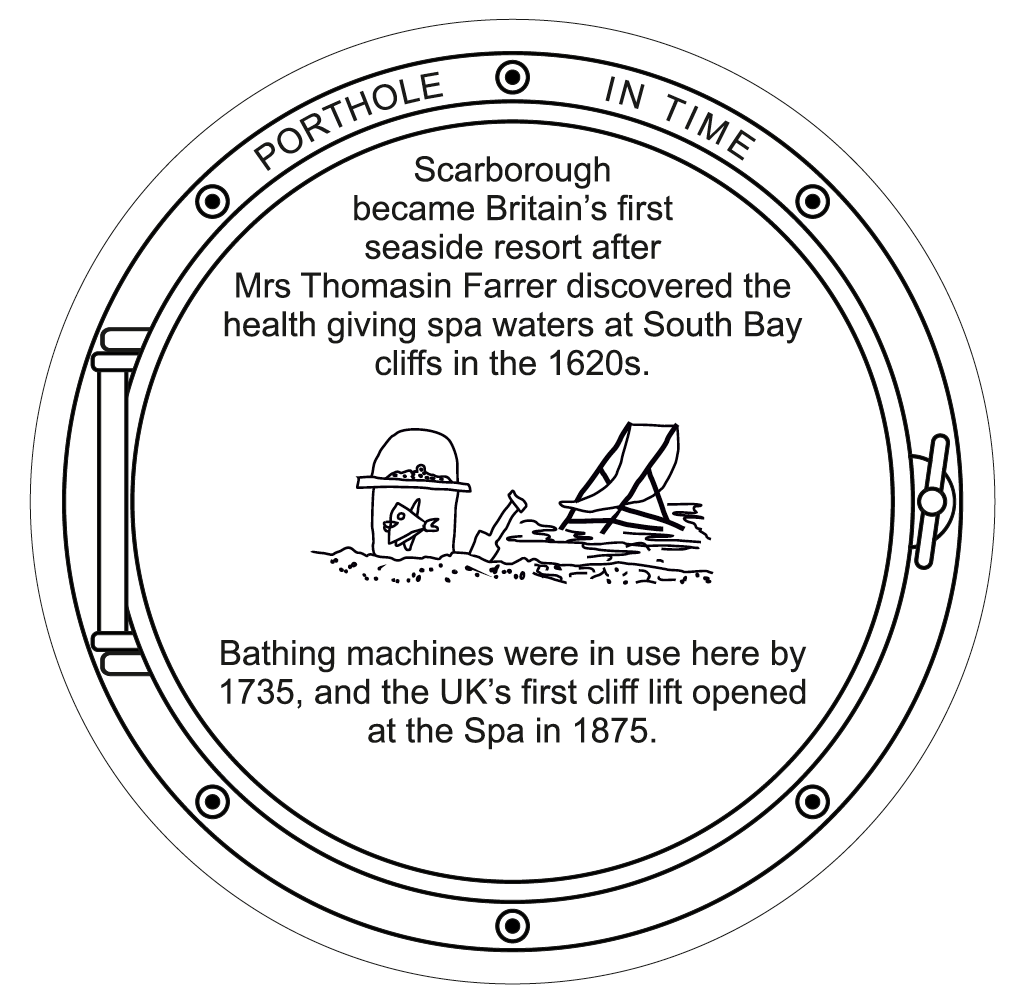
Scarborough’s beginnings as a spa town date back to the discovery of its apparently medicinal spa waters by one Mrs Thomasin Farrer, who was from a wealthy and influential local background – her father and brother both represented Scarborough in parliament. Her husband was a local doctor. Spa water was already an established attraction in towns like Bath and Buxton.
The precise date of the discovery in Scarborough is not known, though it is most likely to be 1626. It is believed Mrs Farrer had noticed that the water stained the bottom of the cliff a reddish brown colour and wondered what was causing it.
You can still see a similar stain in the small well by the steps from the Spa complex down to the beach. In the 1660s and 70s, medical books discussed the benefits of drinking Scarborough’s spa waters for various ailments. One author, Dr Wittie, suggested two half pints of the water in the morning, followed by a walk along the beach, this repeated for a month or more.
When large numbers of visitors arrived to take the spa waters, and subsequently to pursue the health benefits of salt water bathing in the sea, Scarborough became Britain’s first seaside resort, or, in the words of the historian Trevor Pearson: ‘In the hundred or so years that followed the end of the English Civil War, it is no exaggeration to claim that Scarborough invented the seaside holiday.’
By the 1740s, well-to-do people from urban communities in the north of England and further afield were making regular visits in large numbers, for the Spa waters, sea swimming and evening entertainment such as gambling and dancing. Bathing machines were fashionable for women who wanted a discreet dip in the sea.
The Scarborough Spa Cliff Lift opened in 1875 as the South Cliff Tramway, and was Britain’s first ever funicular cliff lift. It connects the Spa with the Esplanade on the South Cliff above and its numerous hotels, with 86.6 metres (95 yards) of track. The railway originally used seawater in a counterweight system, an engine pumping water through a central pipe to the top car until its tank was heavy enough, and the bottom car light enough, to ascend and descend. The cliff lift was immediately popular, carrying 1,400 passengers on its first day and, at its peak, being used by 1.22 million people in the 1945-6 season. Today the system is automated and electric. Four further cliff lifts were built in Scarborough, only one of which, the Central Tramway, still operates.